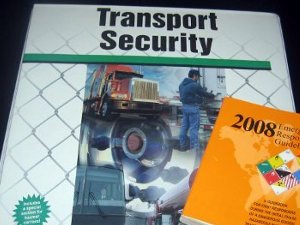Hazardous Material Security
Customized Hazardous Material Security Plans: National Safety Compliance, Inc. can assist transportation and warehouse organizations develop and implement a comprehensive Hazardous Material Security Plan. Federal Regulation 49 CFR Part 172.800 requires that each person who offers transportation of one or more of the substances listed in Part 172.800(b) must develop and adhere to a security plan for the transportation of hazardous materials. The security plan must include an assessment of possible transportation security risks for shipment of the hazardous material(s). Specific measures put into place by the plan may vary commensurate with the level of threat at a particular time. At a minimum, the plan must address personnel security, unauthorized access, and en-route security. The plan must be written and distributed to ALL employees who are responsible for implementing it. The plan must be updated as necessary to reflect changing circumstances or regulations and all applicable employees must be made aware of these changes or updates. National Safety Compliance, Inc. has professional experience in developing such plans in which an individual assessment will be given to each client based on their particular operation. The plan will conform to the Federal requirements as well as the National Security Threat Level system. Facility signs and training certificates included. Customized Plans available, call today for a quote. Hazardous Material HM181 & HM126F Training: (8.0 Hours) The hazardous material regulations are constantly changing. Significant changes were brought about in two dockets; Docket I (HM-200) Intrastate Transportation of Hazardous Materials; and Docket II (HM-206) Improvements to the Hazardous Materials Communication Requirements. These dockets have imposed new requirements on both shippers and transporters of hazardous materials, which significantly impact the way business is conducted. Most of these new requirements are in effect now, but compliance was mandatory by October 1, 1998. See Consultation and Webinar for further details.
|
